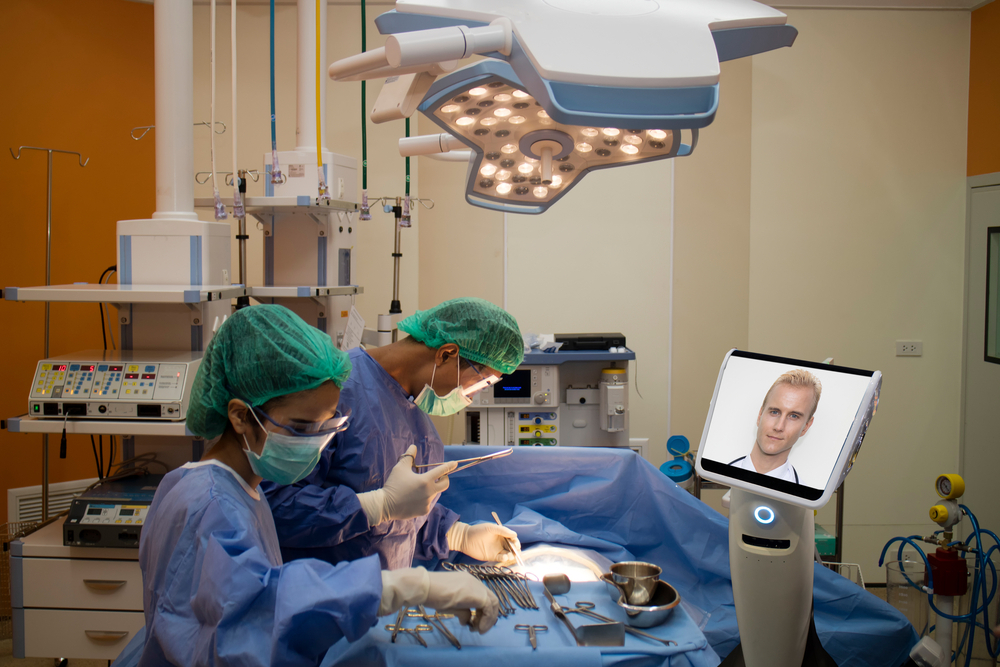First single-port robotic renal vein transposition surgery treats nutcracker syndrome

Editor's Note Sidney Barbier, a University of Denver senior and competitive cross-country skier, became the first person worldwide to undergo single-port robotic renal vein transposition, marking a breakthrough in treating nutcracker syndrome, The Cleveland Clinic reported April 3. As detailed in the article, the robotic surgery ended a competitive skier’s…
Study compares robotic, laparoscopic cholecystectomy cost drivers

Editor's Note A retrospective review of 14 hospitals over 7 years found that robotic cholecystectomy costs were, on average, 2.5 times higher than laparoscopic cholecystectomy ($1,447 vs. $669 per case). Findings were published on March 19 in the journal Surgery. Disposable instrument choices also impact costs. Despite the rising adoption…
AI-driven tech partnerships aim to enhance surgical planning, imaging

Editor's Note Olympus Corp has introduced an AI-driven surgical planning tool designed to enhance precision in liver, lung, and kidney procedures by converting CT and MR scans into real-time 3D models. Meanwhile, the 16-year partnership between GE HealthCare and NVIDIA has evolved to focus on automating routine imaging tasks, such…
Capital funding crunch spurs creative hospital financing

Health systems are fundamentally capital intensive. They are regulated; depend on highly educated, high-cost employees; and operate under complex reimbursement structures. Investing in new technologies and infrastructure upgrades is imperative to keeping up with the latest medical advances. But what happens when capital funds are insufficient or no longer available?…
Robotic surgery transforms ORs as market expands

Editor's Note A February 21 article in Modern Healthcare details how surgical robots are delivering faster procedures, improving patient outcomes, and boosting hospital profits. As detailed in the article, the global surgical robotics market has quadrupled since 2015, growing from $800 million to approximately $3 to $3.5 billion in 2023…
Study links financial conflicts of interest to favorable robotic bariatric surgery research

Editor's Note A study presented at the 2024 Society of American Gastrointestinal and Endoscopic Surgeons (SAGES) annual meeting has revealed a significant correlation between financial conflicts of interest and favorable research outcomes in robotic bariatric surgery, General Surgery News January 18 reports. The article noted this concerning trend: authors who…
Implications of 2024 surgical care trends for the year ahead

Perioperative leaders are entering a time of uncertainty after 2024 proved to be transformative for inpatient and outpatient surgical care. Last year saw important updates from The Joint Commission and the Centers for Medicare & Medicaid Services (CMS) that emphasized improvements alongside ongoing challenges in safety, workforce shortages, reimbursement, and…
Orthopedic surgery in 2025: Embracing innovation, preserving autonomy

Editor's Note With 2024 concluded, orthopedic surgeons and surgical leaders are poised to leverage new technologies while addressing challenges in autonomy and value-based care in 2025, Healio December 17 reports. Ambulatory surgery centers (ASCs) have proven critical in providing cost-effective, patient-centered care, the author noted, highlighting that physician-led ASCs showcase…
Medtronic, Zimmer Biomet challenge Intuitive Surgical’s robotic surgery dominance

Editor's Note Robotic-assisted surgical procedures are no longer futuristic—they are becoming a mainstay in modern ORs. While Intuitive Surgical’s da Vinci system has led the market since 2001, competitors Medtronic and Zimmer Biomet are building innovative portfolios to challenge its dominance, MarketBeat December 12 reports. Medtronic’s Hugo Robotic Assisted Surgery…
Virtual care enhances perioperative efficiency

Eliminating physical distance as a barrier to communication makes it easier for caretakers to help not only their patients, but also one another. This is the promise of virtual care technology, which offers system-wide potential for providers facing growing demand for high-quality, cost-effective care. For perioperative leaders specifically, advantages of…

 Free Daily News
Free Daily News